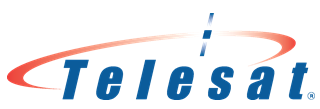
Good news from Telesat. Launched on September 10, Telesat's Telstar 18 VANTAGE has become fully operational.

Telesat announced today that its new high throughput satellite (HTS) is fully operational at 138 degrees East and has entered commercial service. Built by SSL, a Maxar Technologies company, Telstar 18 VANTAGE is the latest in a new generation of Telesat satellites with capacity optimized to serve the types of bandwidth intensive applications increasingly in demand by users worldwide. It replaces and expands on Telesat’s Telstar 18 satellite through extensive C-band capacity over Asia, Ku-band HTS spot beams over Indonesia and Malaysia, and five additional regional Ku-band beams.

Telstar 18 VANTAGE was launched by a SpaceX Falcon 9 rocket from Cape Canaveral Air Force Station in Florida on September 10 and will serve growing demand for mobility, enterprise and telecom services across the Asia Pacific region.
The coverage of Telstar 18 VANTAGE reaches across Asia all the way to Hawaii – in both C- and Ku-band – enabling direct connectivity between any point in Asia and the Americas. Its innovative Ku-band payloads of HTS spot beams and focused regional beams provide customers operating in Southeast Asia, Mongolia, Australia and New Zealand, and the North Pacific Ocean with greater choice and flexibility in deploying high performing broadband networks.
Dan Goldberg, Telesat’s President and CEO stated that Telstar 18 VANTAGE is a state-of-the-art spacecraft that combines regional beams and high throughput spot beams to deliver superior performance and value to their growing base of Asian customers. The market’s favorable response to Telesat’s Telstar VANTAGE satellites confirms that their innovative payloads provide important advantages to Telstar's customers. With the start of Telstar 18 VANTAGE service, they are pleased to be bringing these capabilities to the Asia Pacific region.

